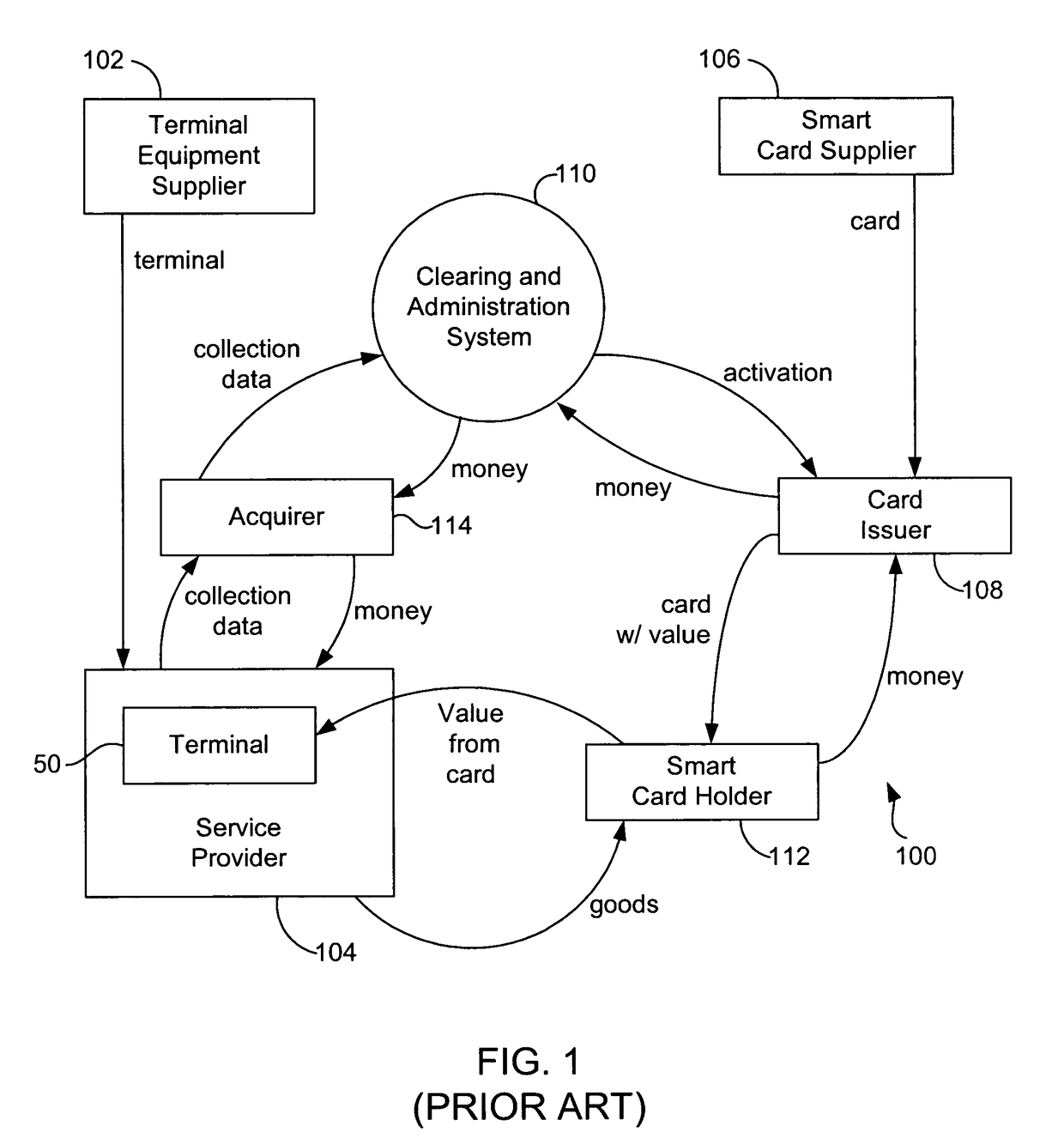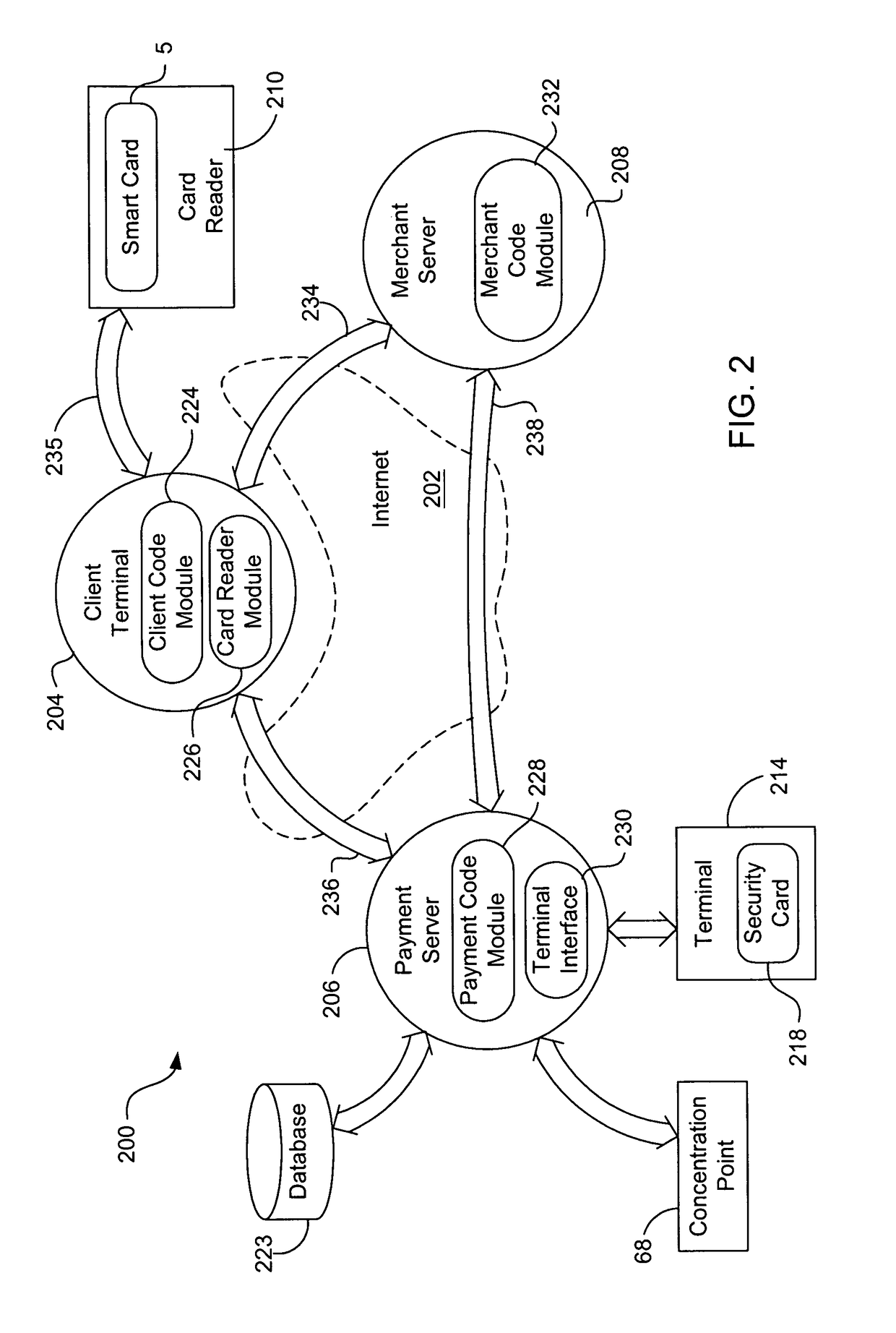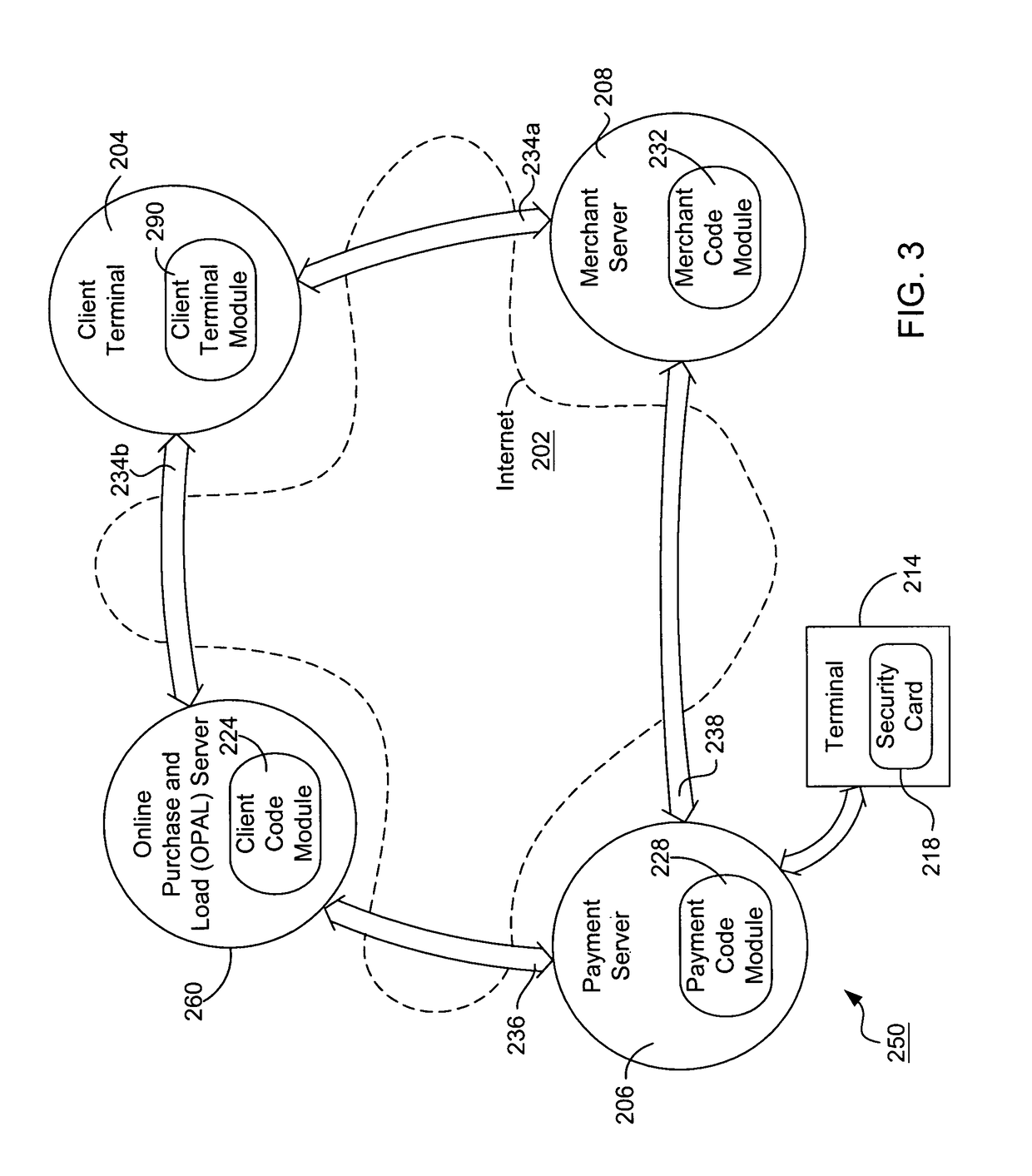Internet payment, authentication and loading system using virtual smart card
a technology of virtual smart cards and payment and loading systems, applied in commerce, data processing applications, instruments, etc., can solve the problems of bookkeeping headache, credit card transactions for small amounts, and inability to accept, so as to facilitate load value, avoid the effect of small amount of transactions, and be worth the expens
- Summary
- Abstract
- Description
- Claims
- Application Information
AI Technical Summary
Benefits of technology
Problems solved by technology
Method used
Image
Examples
first alternative payment embodiment
[0115]FIG. 6 illustrates an alternative embodiment 250a in which security card 218 is able to be released sooner than the security card of FIG. 5; this embodiment also requires fewer exchanges between terminal 214 and payment server 206. A security card in a terminal is dedicated to a particular transaction from the moment when the terminal interface selects that terminal until the security card finally issues a “Debit Result” message and is released by the terminal interface. In some circumstances it is desirable to release the security card earlier. By releasing a security card earlier, the card is tied up for a shorter time per transaction and may move on to the next transaction sooner. Also, the less time that a terminal is dedicated to a particular transaction, and the fewer messages exchanged between the two, the less likely chance there is of a communication error that might interrupt and halt the transaction.
[0116]Embodiment 250a includes client terminal 204, OPAL server 260...
second alternative payment embodiment
[0121]In another embodiment 250b of the present invention as illustrated in FIG. 7, not only is security card 218 allowed to release earlier, but the number of messages exchanged between OPAL server 260 and payment server 206 are reduced. Instead of comparing virtual card signatures in the payment server, the expected virtual card signature from the security card is transmitted to OPAL server 260 where a trusted agent 356 performs the comparison of the expected virtual card signature with the actual signature S3 received from emulator 266. Thus, message exchange between OPAL server 260 and payment server 206 is reduced to one round trip. This is advantageous because the time for a transaction is reduced, the security card is released earlier and fewer messages are exchanged, leading to more reliability over the Internet.
[0122]Embodiment 250b includes client terminal 204, OPAL server 260, payment server 206, merchant server 208 and terminal 214 having security card 218. Communication...
third alternative payment embodiment
[0128]FIG. 8 illustrates another embodiment 250c of the invention in which merchant server 208 performs the comparison of the virtual card signature S3 with the expected signature. Embodiment 250c includes client terminal 204, payment server 206, OPAL server 260, merchant server 208 and terminal 214 having security card 218. This embodiment has all of the advantages of the previous embodiment in which the security card is released earlier, and there are also fewer messages passed between the entities. In this embodiment, if OPAL server 260 or client terminal 204 is not to be trusted to compare the virtual card signatures, then an encrypted expected signature is passed to the merchant server via the OPAL server and the client terminal. OPAL server 260 also passes the raw, unencrypted signature S3 from the virtual card to the merchant server. A routine 366 in the merchant server then compares the two signatures.
[0129]FIG. 14 is a flowchart that describes a technique for implementing t...
PUM
 Login to View More
Login to View More Abstract
Description
Claims
Application Information
 Login to View More
Login to View More - R&D
- Intellectual Property
- Life Sciences
- Materials
- Tech Scout
- Unparalleled Data Quality
- Higher Quality Content
- 60% Fewer Hallucinations
Browse by: Latest US Patents, China's latest patents, Technical Efficacy Thesaurus, Application Domain, Technology Topic, Popular Technical Reports.
© 2025 PatSnap. All rights reserved.Legal|Privacy policy|Modern Slavery Act Transparency Statement|Sitemap|About US| Contact US: help@patsnap.com



